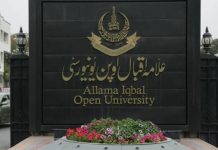Analysis
Ansar M Bhatti
It was a cool and misty morning in November 1997 when an unruly mob pounced upon the Supreme Court of Pakistan forcing the judges including the then Chief Justice Syed Sajjad Ali Shah to flee from the scene in order to avoid fatalities. Syed Sajjad Ali Shah’s bench was hearing a contempt of court plea against the then Prime Minister Nawaz Sharif. The PM viewed the contempt proceedings and judges as ‘biased’ towards him. He feared that if found guilty he had to lose the coveted office of the prime minister. A split among the judges was managed. So much so, some of the judges formed their own bench and dismissed the then sitting chief justice from his office. The PML N leadership never admitted to having been instrumental in the SC attack, however this is also a fact that no security personnel had tried to stop the mob when it was coming to pound the apex court. The mob was rather facilitated by the police in order to make sure that it duly achieves its objective.
The then Chief Justice, when left with no option, wrote a letter, under Article 190 of the Constitution, to the then military leadership to come in aid of the superior court. Article 190 says that all executive and judicial authorities throughout Pakistan shall act in aid of the Supreme Court. The then military leadership, in response to the CJ letter, had advised the Chief Justice to please contact the Defence Ministry for this purpose. Nobody came to the rescue of the then CJP and consequently he had to leave his office rather in an unceremonious manner.
The situation which we are witnessing these days within and without the Supreme Court, appears to be similar to that of 1997. However there is one big difference. Those were kind of dark ages. There used to be only one state-owned TV channel and some newspapers. Social media too was not born yet at that time. The only source of information used to be official TV and a bunch of newspapers — most of them under acute censorship even at that time. That is why whatever happened to the Supreme Court and its judges went unheard and un-reported.
But now it is altogether a different ball game. Today, it is simply impossible to hide facts for a longer period of time. The social media ostensibly has acquired a center stage when it comes to dissemination of information at the grass-root level. With over 100 TV channels and dozens of newspapers it is no longer possible for the government to unduly maneuver public opinion in its favour.
The PML N stalwarts may have a similar mindset in terms of their approach towards the Supreme Court even now however attacking the apex court may no longer be an option. Divisions among the judges nevertheless are quite visible and to some extent the gimmick, (divide and rule) appears to have worked for the ruling alliance albeit it is not sure whether this division would help it achieve the desired results i.e. delaying of the Punjab and KPK election till October this year.
As regards the provincial and federal elections, the sitting government and the Establishment as well want these elections to be delayed even beyond October. The reasons for delaying the Punjab and KP polls, according to the government, happen to be the financial and security related. On the other hand the Supreme Court is not ready to allow naked breach of the Constitution, which clearly states that elections should be held within 90 days after dissolution of the assemblies. As reports suggest the Chief Justice and two other judges are still holding the fort and seem determined to implement Constitutional provisions in letter and spirit. The judges may be small in numbers yet people of Pakistan are quite confident that ultimately the judges would rule the roost since they are perched on the highest pedestal of morality and law. And then they have people’s backing as well so why should they fail?
As I had pointed out in my earlier pieces, the government was in no mood to hold general elections even in October. The idea was to wait for President Alvi to complete his term in September and then pave the way for the imposition of economic emergency through the Acting President Sadiq Sanjrani. That plan may still be on the table however dissolution of Punjab and KP assemblies seems to have made things difficult for the government. And the way things are transpiring as a result of apex court proceedings or PTI’s hostile posture towards the PDM government, it looks as if the PDM may not be able to translate its plan of extending the term of the National Assembly, into reality.
Of course, it is the Supreme Court that will decide as to when the elections in Punjab and KP should take place, however there is a general perception that the Court may also support the idea of holding the provincial and federal elections at the same time and for this purpose the Court has sought assurances from various political parties. But the court will take this course only when all stakeholders evolve a consensus on an election date. If not then the Court shall go by the book. There is a proposal to hold all elections somewhere in August for which the assemblies had to be dissolved in June. The government can present its budget in early June and then quit.
The PMLN is scared of possible defeat in elections that is why it is reluctant to call it a day at this point. Most of the analysts believe the PML N ought to take this risk and should not be worried at all even if the Pakistan Tehreek-e-Insaf comes to power. It would take only a year or maximum two for PTI to itself torpedo its ship because it has no game plan either. Then the field shall be wide open for PMLN and other political players.












